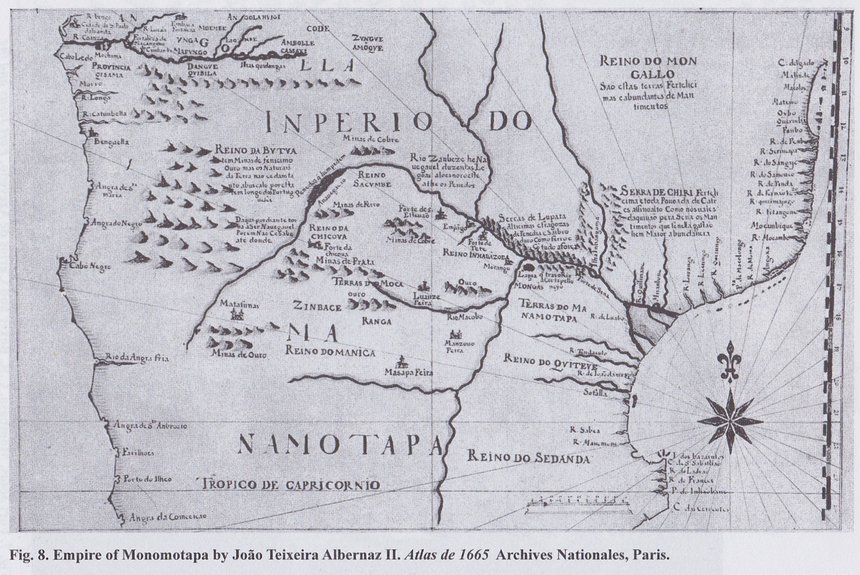Surprising lessons in cultural understanding from a 17th-century Jesuit text
by Professor Malyn Newitt
4 May 2021

As societies struggle to come to terms with cultural diversity, it is sometimes valuable to see how very similar issues were confronted in earlier centuries and what adjustments people at the time were able to make.
The Jesuits in the 16th and 17th centuries wrestled with these cultural issues as they pressed forward with their mission to convert the world to Christianity. How could Christianity be made to fit into societies with customs and cultural values very different from those of western Europe? On what basis could Christians and non-Christians live together in the same society? There are many profoundly troubling aspects to these questions, which resonate loudly in the 21st century.
Exploring the narratives of a 17th-century Jesuit text
One of the lesser-known Jesuit texts is the Journey which Father António Gomes made to the Empire of Manomotapa, now made available in English by the British Academy for the first time.
António Gomes was a Jesuit priest who joined the mission in Southeast Africa, which had been established in 1610, sometime in the late 1620s. He returned to India 10 years later where he became Coadjutor of the Society in Goa and served as a priest in the church of Varca in Salsete. In 1648, at the request of his superior, Giovanni Maracci, he wrote the account of his missionary work in Africa. His text first appeared in 1959 in the Portuguese journal Studia, now long defunct. However, it deserves to be revisited because of the way it engages with the issues of cultural diversity – not so much through direct argument, but in the way the author constructed his narrative of events in Southeastern Africa.

Gomes recorded many incidents when the dead returned, either in person or in the form of visions, to influence the affairs of the living. His belief in the reality of these phantoms seems strange to 21st-century readers but reminds us that he was working in an African society where the interventions of the ancestors in the daily affairs of society were considered not only to be quite normal but highly necessary. In some of these incidents, Gomes’s experience of the supernatural is confirmed, and even prompted, by his African companions who shared his belief in the constant presence of the spirit world.
“In the middle of the night, three knocks were heard at the door… his servants went to see what it was but neither those inside nor those outside the door of the house found anyone there. The next day there was more knocking and the guard posted there heard it but did not see anyone… He said he thought it might be one of [the] servants, who had died on the Luabo bar, coming back for some Masses.”
The way that reproduction and the related issues of gender relations are managed is one of the most important identifiers of a society’s culture, but also one of the profound differences between cultures that can appear to be unbridgeable. A 17th-century European priest could hardly be expected to see beyond the precepts of his own monogamous culture with its codes of patriarchy, restrictive sexual customs and ideas of decency, but Gomes’s narrative has some surprises. In Manomotapa, he witnessed young African girls dancing naked for the entertainment of strangers. Instead of condemnation, he explained “it is a barbaric custom but among them it has a better meaning than may appear. It is the same as saying ‘we trust you so much that we desire you to see, even in private, the naked bodies of our daughters’. This is the greatest honour they do to anyone.”
He also mentioned the custom among the Asena people of the lower Zambezi for adolescent boys and girls to co-habit. When this led to pregnancy, he commented that it was the occasion for marriages to be arranged, showing an unexpected level of cultural understanding. When discussing marriage itself, he explained, without attempting to moralise, what happened when a young married woman was unable to conceive. She would return to her family and “the father and mother say that if she is a good daughter, she has a duty to do her best and learn. She finds a way to learn and then, when she is pregnant, they send for the husband, [saying that] his wife has already learnt. And he is very happy and takes her home in the belief that the child is his.”
There are many layers of interpretation to this – one being Gomes’s apparent assumption that Africans did not fully understand the "facts of life" – but on another level he was illustrating, and in no way showing disapproval of, a rationality within African culture which differed greatly from the western intellectual tradition.
Gomes’s perspective on cultural difference
Gomes, like so many other Europeans, commented on what he perceived as a technological deficit in African culture. He noted that “they only make two planks from a tree that could give 20. They split them down the middle with wedges and then they thin them down to make the planks.” So fertile was the Zambezi region, he commented, that it could produce more sugar than Brazil and more indigo and cotton than India, but the industry was lacking. However, his narrative focused less on technological deficit than on the extreme levels of skill that their very different technologies demonstrated. Clothes worn in the Manomotapa’s court, for example, were exquisite, “decorated with gold roses in silk, a beautifully made thing, manufactured by the cafres themselves – cloth worth two or three hundred cruzados and more,” while African skill in medicine attracted his admiration, especially the skill with which an African surgeon could remove a barbed arrow without causing pain or further damage to the wounded person.
Unusually for a 17th-century writer, Gomes allowed Africans to speak for themselves. They were not just figures in a cultural landscape painted by a European from an alien culture. His selected quotations displayed wit and wisdom that clearly delighted the narrator. After being shipwrecked, Gomes wrote, “I began to rail against the sea which had done us so much harm and he gave me a reply which I found to be very wise: ‘If you know the sea is so crazy and has no head [reason] why do you trust yourselves to it?’”
Gomes gave another example of African wit when the angry words of a Portuguese trader were neatly turned against him. When the boatmen who were taking him up the Zambezi appeared to be going too slowly, he grew angry. “After he had shouted a lot, he said in great anger, ‘By the Holy Gospel, I am going to take a cutlass and split your heads’. The Africans changed the song they were singing and the helmsman started with ‘Hear, Hear, Hear! Holy Gospel! Chief Captain. Pick up? Cutlass? Split Head? Holy Gospel! Hear? Hear?’ and this was made twice as long with the pauses.”
Reflections on cultural understanding
What can a reading of a 17th-century text of this kind contribute to the "present discontents"? Gomes shows how important it is, in discussing cultural questions, to understand the reasoning and purposes behind different cultural practices and to listen to what different cultures have to say before adopting the moral or cultural high ground. That a Jesuit from counter-reformation Europe, which still burned heretics, witches and even scientists, could do this is not only surprising, but points the way to a different western intellectual tradition, not only of tolerance, but also of cultural understanding, that needs to be renewed.
Professor Malyn Newitt is Emeritus Professor at King’s College London. Professor Newitt edited and translated Journey which Father António Gomes made to the Empire of Manomotapa, published as part of the British Academy’s Fontes Historiae Africanae series by Oxford University Press.

